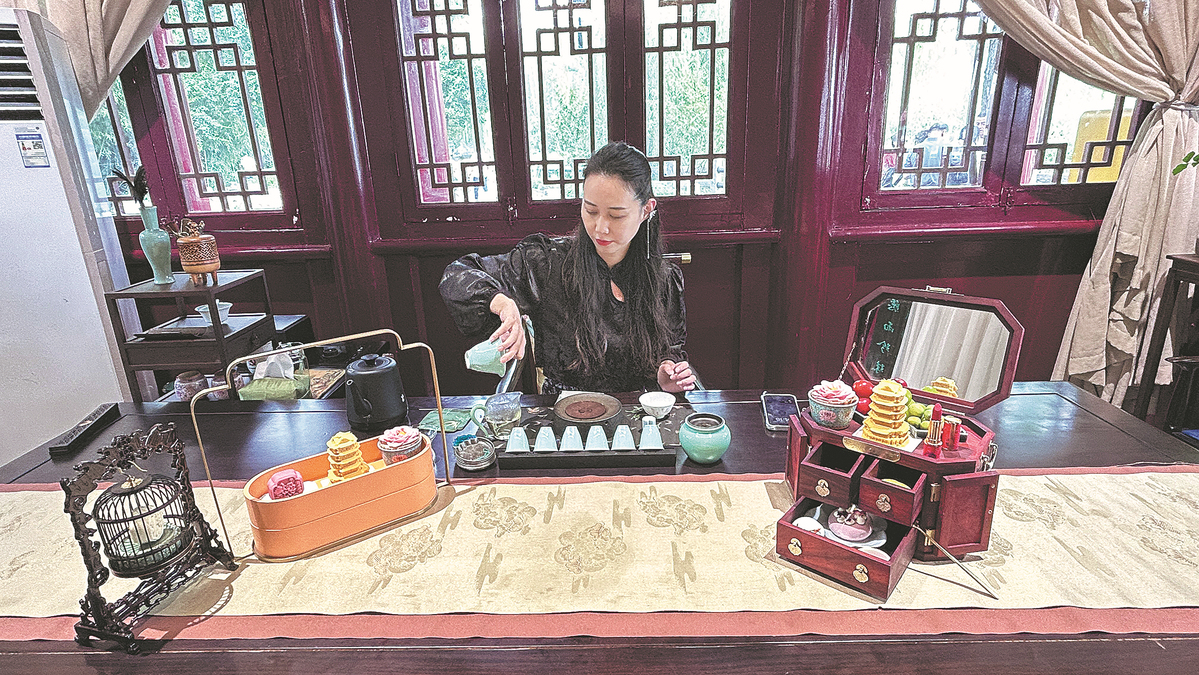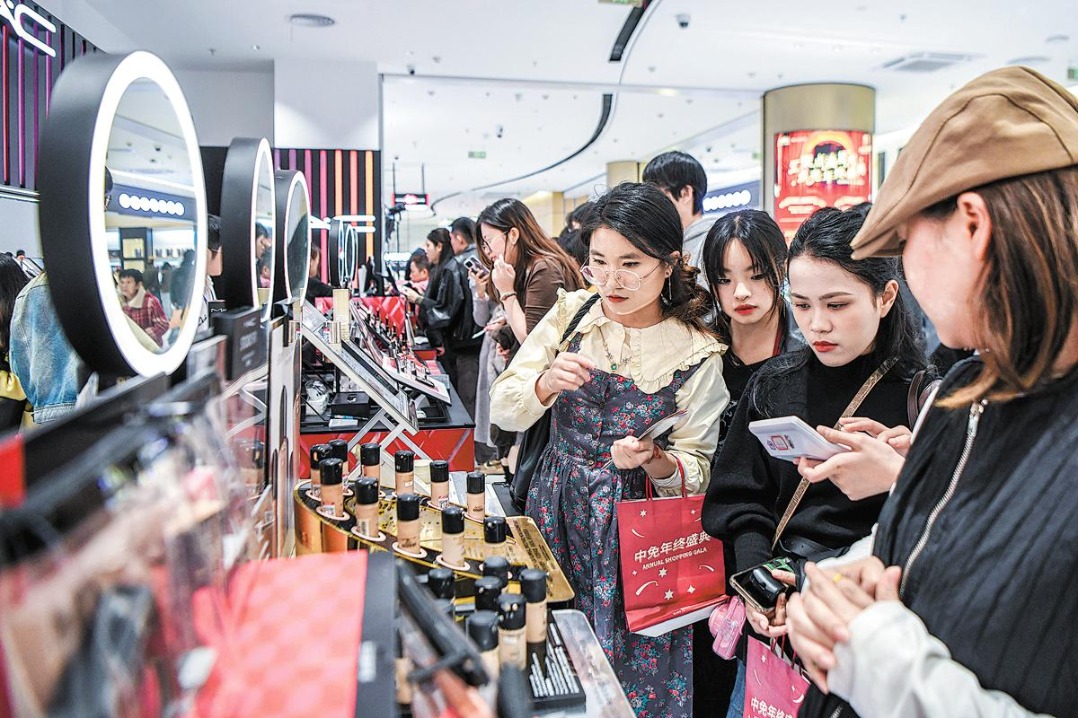Theater built in 1894 bustles as creativity hub
By ZHAO RUIXUE in Jinan | China Daily | Updated: 2023-10-02 10:35

In the heart of Jinan, capital of Shandong province, near the eastern gate of Daming Lake, stands a century-old building whose blue-tiled walls and intricately carved beams are reminiscent of the Qing Dynasty (1644-1911).
The structure, built in 1894, is one of the best-preserved old theaters in Shandong province. Today, rather than resting as a relic of the past, it bustles with life as a hub of culture and creativity with efforts of social groups and the local government.
"I think we're successful. We have helped more and more people get to know the city's traditional culture, especially its traditional folk arts," said Wang Ying, one of the current operators of the theater.
Jinan, the capital of Shandong, was once, alongside Beijing and Tianjin, one of the three major centers for culture of Quyi, which refers to traditional Chinese storytelling and performing arts.
Various forms of folk arts flourished in the city, including storytelling, crosstalk — a quickly spoken form of recitation — and other spoken art, creating a magnificent cultural phenomenon. Nanfeng Theater witnessed the development and prosperity of Jinan's Quyi culture.
Wang and her team started to restore the building in 2020.
"We updated the interior decoration, preserving the original structure of the building," said Li Qian, the team's restoration designer.
The structure was built with mortise and tenon joints, a traditional and sturdy construction method, without using a single nail, said Li.
After restoration, the theater reopened to the public, serving as a venue of cultural innovation, blending traditional and contemporary elements seamlessly.
Traditional Chinese folk performances are now staged there including Lyuju Opera, crosstalk and Shandong clapper ballads. The two-story, approximately 300-square-meter building, can hold an audience of nearly 100.
In addition to traditional folk performances, the heart of this revival is the introduction of a unique experience for visitors — traditional Chinese afternoon tea with a twist.
"Here, history is not just to be looked at, but to be tasted," Wang said. One popular dessert is inspired by the ancient makeup boxes of the Qing Dynasty. Inside the box are edible lipsticks and pressed powders.
An array of creative desserts, coffee and teas have been developed combining Jinan's unique urban culture, such as dessert designed in the patterns of the scenery of Daming Lake and the city's iconic Qianfo Mountain, creatively crafted snacks and a latte with a traditional Chinese blue-and-white porcelain bowl.
Two years ago, many visitors to the theater were often unaware of its existence, but now the building has developed into a hotspot for enthusiasts of traditional Chinese culture, said Wang. The theater receives nearly 100,000 visitors annually.
Using the building is the best way to preserve it, Wang said.
"New consumption trends can rouse consumers' desire to explore the ancient building," she said.
A wide variety of traditional costumes are on offer for visitors to experience traditional Chinese clothing, ranging from Han Dynasty (206 BC-AD 220) styles to those of the Qing Dynasty.
The theater also houses a unique retail space showcasing city souvenirs and creative products that narrate the tales of Jinan's culture and history. For traditional festivals, some cultural events are held showcasing traditional Chinese handicrafts and folk performances.
"Nowadays, youngsters, particularly the Chinese Gen Zers, have no shortage of material possessions. However, they also have a keen interest in innovative concepts, especially those rooted in traditional Chinese culture," Wang said.
"The revival of classic Chinese traditions provides an opportunity to present these gems in a contemporary setting," she said.
The theater's online and offline marketing strategies, including collaborations with influencers and hosting cultural festivals, have significantly boosted its popularity. For instance, on Douyin, the domestic equivalent of TikTok, videos related to Nanfeng Theater have garnered hundreds of millions of views and millions of likes.
"What we're looking for is a symbiotic relationship. The historical buildings get a new lease on life, ensuring their preservation for future generations," Li said.
Last year, the National Cultural Heritage Administration released a document that encourages social organizations, such as charities and interest groups, to participate more in the preservation and use of historical buildings.
The document suggested that social organizations could develop these heritage sites into public venues, such as museums, cultural centers and exhibition and leisure destinations like homestays, inns and tea houses. This could be achieved through various means, including in coordination with the local government.
The revival of Nanfeng Theater serves as an inspiring example of revitalizing these historical structures. It demonstrates that, through innovation and creativity, history can be reimagined and celebrated in novel and captivating ways, experts said.
Liu Chuan contributed to this story.
























